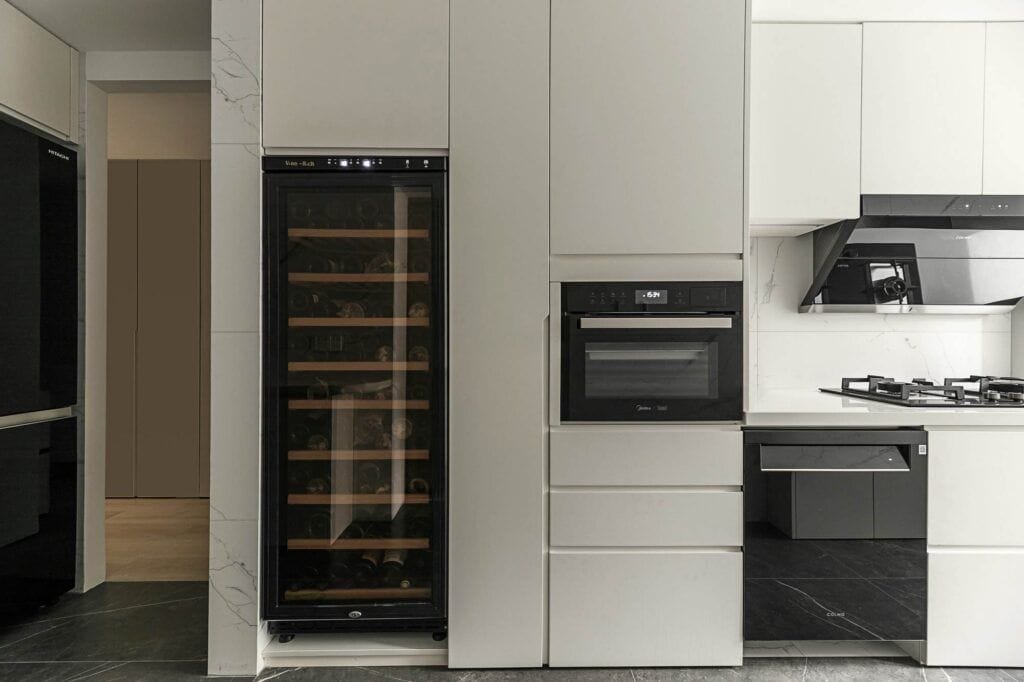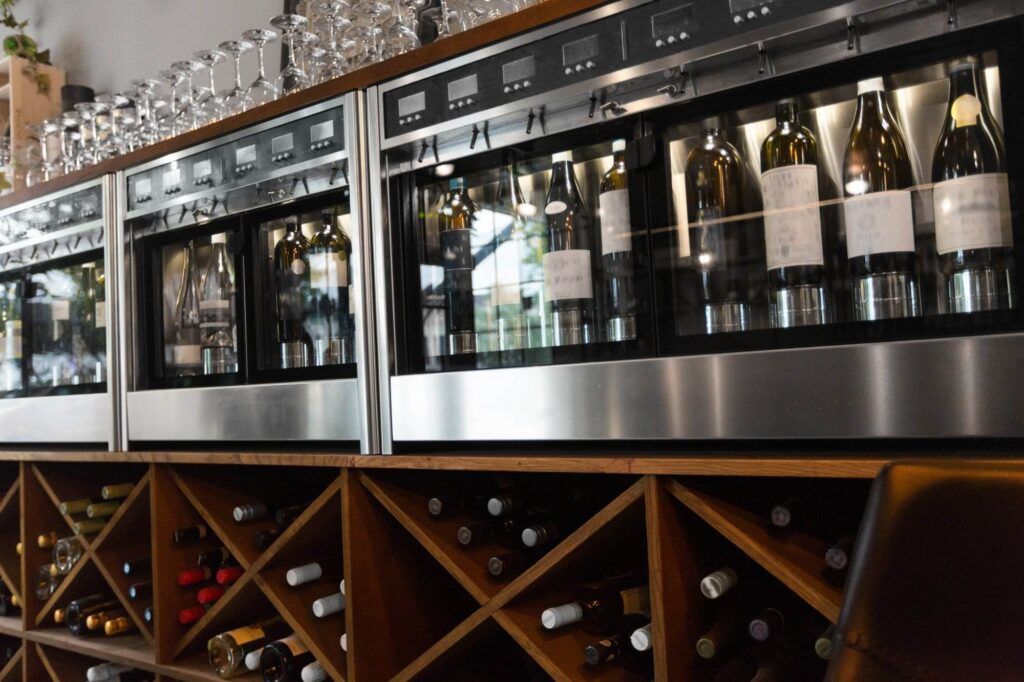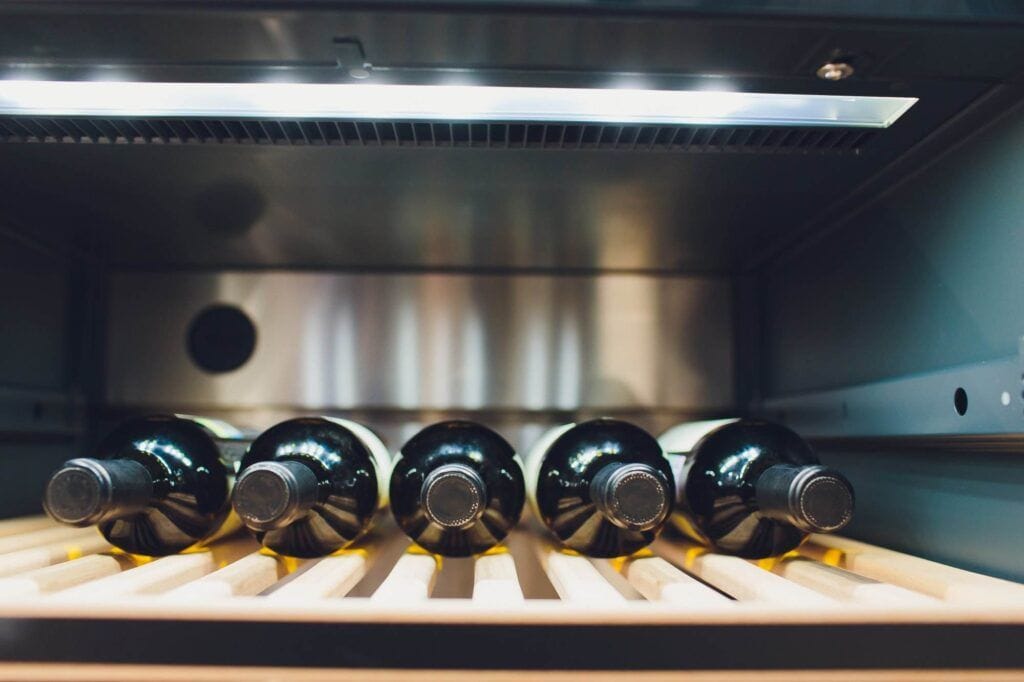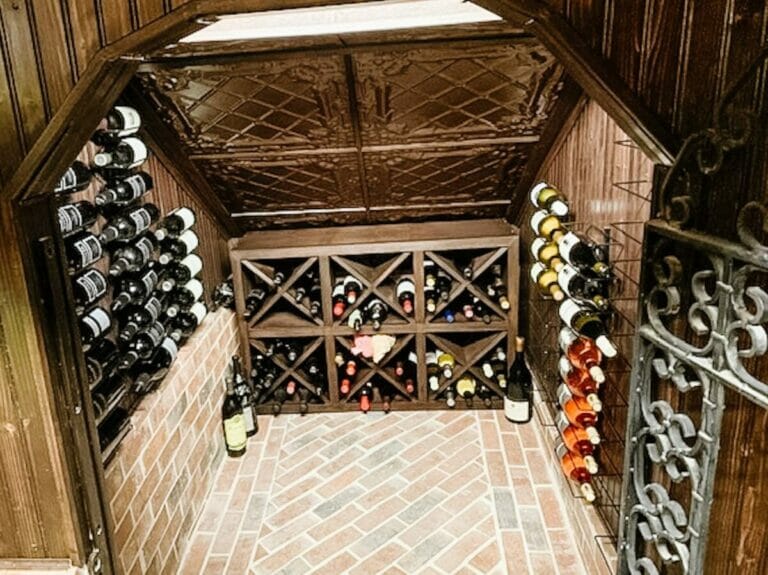Guide to mini split cooling for wine closets under 100 cubic feet
Mini split cooling systems, also known as ductless mini-split systems, are an increasingly popular choice for temperature control in various spaces, including wine closets. These systems consist of two main components: an indoor unit that distributes cool air and an outdoor unit that houses the compressor and condenser. The absence of ductwork makes mini splits particularly advantageous for spaces where traditional air conditioning systems may be impractical or inefficient.
They operate using refrigerant lines that connect the indoor and outdoor units, allowing for efficient heat exchange and temperature regulation. One of the key features of mini split systems is their ability to provide zoned cooling. This means that each indoor unit can be controlled independently, allowing for precise temperature settings tailored to specific areas.
For wine collectors, this is particularly beneficial, as maintaining a consistent temperature is crucial for preserving the quality and flavor of wine. Mini splits can be adjusted to maintain the ideal temperature range for wine storage, typically between 50°F and 57°F, ensuring that your collection remains in optimal condition.
Key Takeaways
- Mini split cooling systems are ductless and consist of an indoor unit and an outdoor compressor, making them ideal for wine closets.
- Factors to consider when choosing a mini split system for a wine closet include the size of the space, insulation, and the number of bottles stored.
- Proper installation and regular maintenance are crucial for the efficient operation of mini split cooling systems.
- Mini split cooling systems offer benefits such as precise temperature control, humidity regulation, and quiet operation for wine closets.
- Common mistakes to avoid when using mini split cooling systems include improper sizing, poor installation, and neglecting maintenance.
Factors to Consider When Choosing a Mini Split System for a Wine Closet
When selecting a mini split system for a wine closet, several factors must be taken into account to ensure optimal performance. First and foremost is the size of the wine closet. The cooling capacity of a mini split system is measured in BTUs (British Thermal Units), and it is essential to choose a unit that can adequately cool the space without overworking itself.
A unit that is too small will struggle to maintain the desired temperature, while one that is too large may cycle on and off frequently, leading to temperature fluctuations that can harm your wine. Another critical consideration is the insulation of the wine closet. Proper insulation helps maintain a stable temperature and reduces the workload on the cooling system.
If the closet is poorly insulated, it may require a more powerful mini split system to compensate for heat gain from outside sources. Additionally, consider the placement of the indoor unit; it should be positioned to allow for even air distribution throughout the space, avoiding any hot spots that could affect the wine.
Installation and Maintenance Tips for Mini Split Cooling Systems

Proper placement of both the indoor and outdoor units is crucial; the outdoor unit should be located in a shaded area to enhance efficiency, while the indoor unit should be positioned for optimal airflow. Maintenance is equally important in ensuring the longevity and efficiency of your mini split system. Regularly cleaning or replacing air filters is essential to maintain good airflow and prevent dust buildup, which can hinder performance.
Additionally, it is wise to schedule annual maintenance checks with a qualified technician who can inspect refrigerant levels, clean coils, and check for any potential issues before they become significant problems. This proactive approach will help keep your wine closet at the ideal temperature year-round.
Benefits of Using Mini Split Cooling Systems for Wine Closets
Mini split cooling systems offer numerous advantages for wine storage that make them an excellent choice for wine closets. One of the most significant benefits is their energy efficiency. Unlike traditional air conditioning systems that rely on ductwork, mini splits minimize energy loss by delivering cool air directly to the desired space.
This efficiency not only helps reduce energy bills but also contributes to a more environmentally friendly cooling solution. Another advantage is the flexibility that mini split systems provide. With their ability to control individual zones, you can tailor the temperature settings based on your collection’s needs or even adjust them seasonally.
This level of control ensures that your wine is stored at its optimal temperature, preserving its quality over time. Furthermore, mini splits operate quietly compared to traditional systems, allowing you to enjoy your wine collection without disruptive noise.
Common Mistakes to Avoid When Using Mini Split Cooling Systems
While mini split cooling systems are effective for maintaining ideal temperatures in wine closets, there are common mistakes that users should avoid to ensure optimal performance. One frequent error is neglecting proper sizing of the unit. As mentioned earlier, choosing a system that is either too small or too large can lead to inefficiencies and temperature fluctuations.
It’s essential to consult with an HVAC professional who can accurately assess your space and recommend an appropriately sized unit. Another mistake is failing to monitor humidity levels within the wine closet. While temperature control is crucial, humidity also plays a vital role in preserving wine quality.
Ideally, humidity levels should be maintained between 50% and 70%. If humidity levels are too low, corks can dry out, leading to oxidation; if too high, mold can develop on labels and corks. Investing in a hygrometer can help you keep track of humidity levels and make necessary adjustments.
Comparing Mini Split Cooling Systems with Traditional Cooling Methods for Wine Closets

When considering cooling options for wine closets, it’s essential to compare mini split systems with traditional methods such as window units or central air conditioning systems. Traditional systems often rely on ductwork, which can lead to significant energy loss due to leaks or inefficiencies in airflow. In contrast, mini splits deliver cool air directly into the space without ductwork, making them more efficient and effective for maintaining stable temperatures.
Additionally, traditional cooling methods may not offer the same level of zoning capabilities as mini splits. Central air conditioning typically cools an entire home uniformly, which may not be suitable for a dedicated wine closet that requires specific temperature control. Window units can also be less efficient and may not provide adequate cooling for enclosed spaces like wine closets.
Overall, mini split systems stand out as a superior choice for those looking to maintain optimal conditions for their wine collections.
Tips for Maximizing the Efficiency of Mini Split Cooling Systems
To get the most out of your mini split cooling system, there are several strategies you can implement to maximize its efficiency. First, ensure that your wine closet is well-insulated to prevent heat gain from outside sources. Insulation helps maintain stable temperatures and reduces the workload on your cooling system, ultimately extending its lifespan.
Regular maintenance is another critical factor in maximizing efficiency. Clean or replace air filters as needed and schedule annual professional inspections to keep your system running smoothly. Additionally, consider using curtains or shades on windows near the wine closet to block out direct sunlight, which can raise temperatures inside the space.
By taking these steps, you can enhance the performance of your mini split system while ensuring your wine remains in perfect condition.
Budget-Friendly Options for Mini Split Cooling Systems for Wine Closets
While mini split cooling systems are often seen as a premium option for climate control, there are budget-friendly alternatives available that do not compromise on quality or performance. When shopping for a mini split system, look for models that offer energy-efficient features such as inverter technology, which allows the compressor to adjust its speed based on cooling demand rather than operating at full capacity all the time. Additionally, consider purchasing from reputable brands that offer competitive pricing without sacrificing reliability.
Many manufacturers provide financing options or seasonal promotions that can help make these systems more affordable. By doing thorough research and comparing different models and prices, you can find a budget-friendly mini split cooling system that meets your needs while ensuring your wine collection remains perfectly preserved.
FAQs
What is a mini split cooling system?
A mini split cooling system is a type of air conditioning system that consists of an indoor unit and an outdoor compressor. It is designed to provide efficient and targeted cooling for small spaces.
How does a mini split cooling system work?
The indoor unit of a mini split cooling system absorbs heat from the air inside the space and transfers it to the outdoor compressor, where it is released. This process allows the system to effectively cool the indoor space.
What are the benefits of using a mini split cooling system for a wine closet under 100 cubic feet?
Mini split cooling systems are ideal for small spaces like wine closets because they are energy efficient, quiet, and provide precise temperature control. They also do not require extensive ductwork, making them easy to install in compact areas.
What should I consider when choosing a mini split cooling system for a wine closet under 100 cubic feet?
When selecting a mini split cooling system for a wine closet, it is important to consider the cooling capacity, energy efficiency, and noise level of the unit. Additionally, the system should be equipped with features that are specifically designed for maintaining the ideal temperature and humidity levels for wine storage.
Are mini split cooling systems easy to install and maintain?
Mini split cooling systems are relatively easy to install, especially in comparison to traditional central air conditioning systems. They also require minimal maintenance, with regular cleaning of the filters and occasional professional servicing to ensure optimal performance.

for Wine Closets Under 100 Cubic Feet










